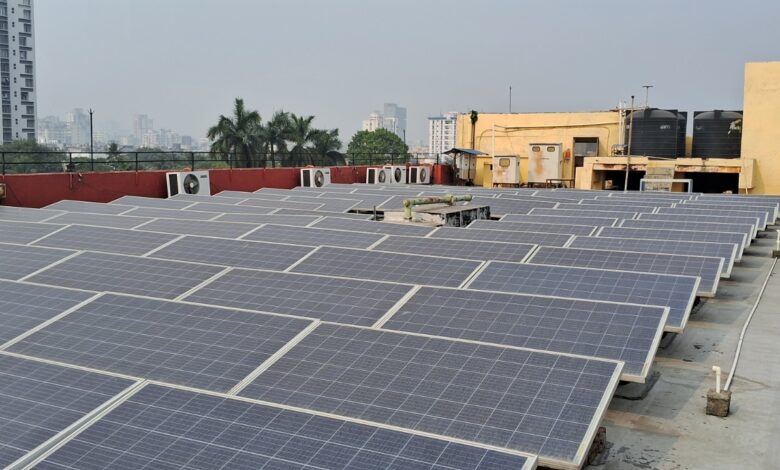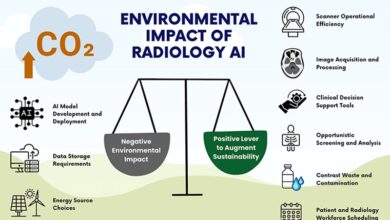Alternative Energy Resources: What to Expect for the Future
Saikat Kumar Basu / 20th February 2025
- Introduction
Alternative energy resources are renewable sources of energy that replace traditional fossil fuels like coal, oil, and natural gas. They are important because they help reduce greenhouse gas emissions, decrease dependence on finite fossil fuels, and promote sustainable energy solutions.Types of Alternative Energy Resources:Solar Energy – Captures sunlight and converts it into electricity or heat.
Wind Energy – Uses wind turbines to generate electricity.
Hydropower (Hydroelectric Energy) – Harnesses the power of moving water, such as rivers or dams.
Geothermal Energy – Uses heat from beneath the Earth’s surface to generate power.
Biomass Energy – Converts organic materials (wood, crop waste, and animal waste) into fuel.
Tidal and Wave Energy – Uses ocean tides and waves to generate electricity.
Hydrogen Fuel Cells – Converts hydrogen into electricity with water as the only byproduct.Why is Alternative Energy so important?
Environmental Benefits – Reduce pollution and carbon emissions.
Renewable and Sustainable – Unlike fossil fuels, they do not deplete over time.
Energy Independence – Reduces reliance on imported oil and gas.
Economic Growth – Creates jobs in the renewable energy sector.
Climate Change Mitigation – Helps combat global warming by lowering greenhouse gas emissions.
Switching to alternative energy is essential for a cleaner, more sustainable future.Shifting to alternative energy sources like solar, wind, and biofuels comes with several challenges:
1. High Initial Costs
Renewable energy infrastructure (solar panels, wind turbines, battery storage) requires significant upfront investment.
Governments and businesses need incentives or subsidies to offset costs.2. Intermittency and Reliability
Solar and wind energy depend on weather conditions, making them less predictable than fossil fuels.
Energy storage solutions (like batteries) are expensive and still developing.3. Grid Infrastructure Limitations
Existing power grids are designed for centralized fossil fuel plants, not decentralized renewable sources.
Upgrading grids for smart energy distribution requires time and funding.4. Energy Storage Challenges
Large-scale storage solutions (like lithium-ion and solid-state batteries) are costly and have limited efficiency.
Research is ongoing to improve storage capacity and longevity.5. Land and Environmental Impact
Large-scale solar farms and wind turbines require significant land, which can impact ecosystems and agriculture.
Some renewables (like hydropower) can disrupt local water systems and wildlife.6. Raw Material Scarcity
Renewable technologies rely on rare earth metals (e.g., lithium, cobalt) that have limited global supply.
Mining for these materials raises environmental and ethical concerns.7. Policy and Political Barriers
Some governments still subsidize fossil fuels, making renewables less competitive.
Political resistance from industries that profit from traditional energy sources slows progress.8. Public Awareness and Acceptance
Some communities resist wind and solar farms due to aesthetic or noise concerns.
Education and incentives are needed to increase public support.9. Economic Transition for Fossil Fuel Workers
Many jobs depend on coal, oil, and gas industries.
A just transition requires retraining programs and alternative employment opportunities.10. Technology Development and Integration
Continued research is needed to improve efficiency, storage, and grid integration of renewables.
Smart grids and AI-based energy management can help optimize renewable energy usage.Despite these challenges, advancements in technology and policy need to make renewable energy more viable every year. Making alternative energy sources viable for widespread consumption requires a combination of technological, economic, and policy-driven strategies. Here are some key approaches:
1. Technological Advancements
Improving Efficiency: Increase energy conversion efficiency for solar panels, wind turbines, and other renewables.
Energy Storage Solutions: Develop better batteries (e.g., solid-state, lithium-air) and grid storage solutions like pumped hydro and hydrogen storage.
Smart Grid Development: Implement intelligent grid systems for better energy distribution and reduced wastage.
Hybrid Systems: Integrate multiple renewable sources (e.g., solar-wind, solar-hydro) to ensure reliability.2. Economic Incentives & Market Viability
Subsidies & Tax Incentives: Governments should provide financial incentives for renewable energy development and adoption.
Carbon Pricing: Implement carbon taxes or cap-and-trade systems to make fossil fuels less economically attractive.
Investment in R&D: Increase public and private sector funding for innovation in alternative energy technologies.
Cost Reduction: Scale up production to bring down costs, similar to what has been achieved with solar panels.3. Infrastructure & Policy Support
Energy Storage Integration: Build infrastructure for storing excess renewable energy to ensure consistent supply.
Upgrading Transmission Networks: Expand and modernize power grids to accommodate decentralized renewable energy production.
Mandates & Regulations: Set renewable energy targets and enforce stricter emissions regulations.
Public-Private Partnerships: Encourage collaboration between governments, businesses, and research institutions.4. Public Awareness & Behavioral Shifts
Education & Advocacy: Increase awareness of renewable energy benefits and encourage adoption.
Consumer Incentives: Provide incentives for households and businesses to install renewable energy systems.
Electrification of Industries: Promote electric transportation and heating to reduce dependence on fossil fuels.5. Global Cooperation
International Agreements: Strengthen global commitments like the Paris Agreement.
Technology Transfer: Share renewable energy innovations with developing nations to accelerate global adoption.
Sustainable Supply Chains: Ensure ethical and sustainable sourcing of materials for renewable technologies.
By implementing these strategies, alternative energy sources can become more efficient, affordable, and widely adopted, ensuring a cleaner and more sustainable energy future.Future of Alternative Energy
The future of alternative energy looks promising, with rapid advancements in technology, falling costs, and increasing adoption worldwide. Here are some key trends shaping the future:1. Solar and Wind Domination
Solar and wind energy are expected to become the backbone of global electricity generation due to lower costs and higher efficiency.
Innovations like perovskite solar cells and floating wind farms will improve efficiency and accessibility.2. Energy Storage Breakthroughs
Batteries, like solid-state batteries and lithium-sulfur batteries, will provide longer storage and faster charging.
Grid-scale energy storage (e.g., pumped hydro, compressed air, and hydrogen storage) will stabilize renewable energy supply.3. Green Hydrogen Revolution
Hydrogen produced using renewable energy (green hydrogen) will be a key fuel for industries, transportation, and energy storage.
Countries are investing in hydrogen infrastructure for long-term sustainability.4. Electrification of Everything
Transportation: Electric vehicles (EVs) will dominate, with solid-state batteries improving range and charging times.
Industry & Heating: Electric heat pumps and induction-based industrial heating will replace fossil fuel-based systems.5. Smart Grids & AI Integration
AI and IoT will manage electricity demand efficiently, balancing renewable energy fluctuations.
Decentralized grids (microgrids) will improve energy resilience, especially in remote areas.6. Next-Gen Nuclear (Fusion & SMRs)
Fusion energy (e.g., ITER, Helion) could become viable by mid-century, offering limitless clean power.
Small Modular Reactors (SMRs) could provide flexible, safer nuclear power to complement renewables.7. Bioenergy & Carbon Capture
Advanced biofuels and synthetic fuels will power aviation and heavy transport.
Carbon capture & utilization (CCU) will help clean up industries that are hard to electrify.8. Space-Based Solar Power (SBSP)
Concepts like solar farms in space beaming energy wirelessly to Earth could be a long-term breakthrough.Alternative energy is paving the way for a cleaner, more sustainable future! With advancements in solar, wind, and other renewable sources, we’re reducing pollution, creating jobs, and ensuring a healthier planet for future generations. Every step toward renewable energy is a step toward energy independence and a brighter tomorrow!
Photo credit: Saikat Kumar Basu
(This story has not been edited by News Mania staff and is published from a Media Release)









